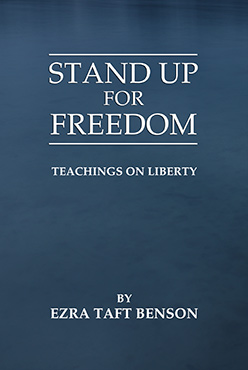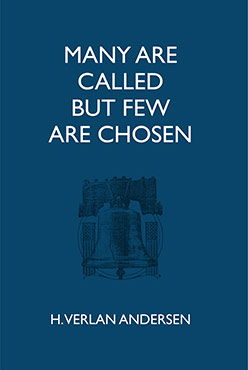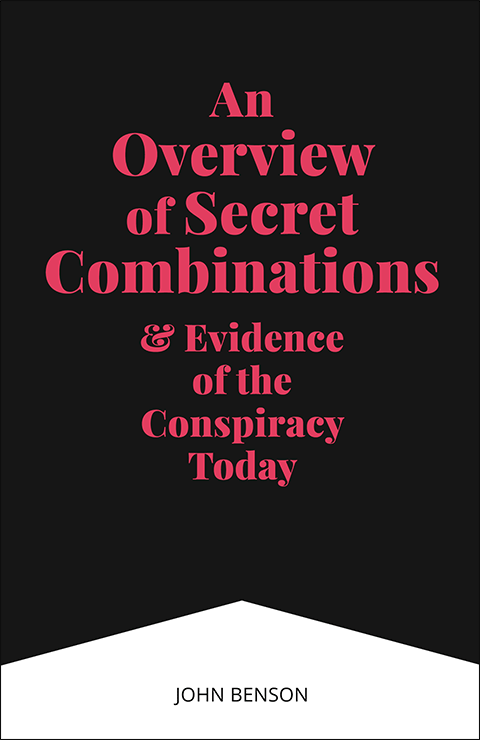A Testimony Vibrant and True
We often sing in our congregations a favorite hymn, “An Angel from on High,” whose words were written more than a century and a half ago by Parley P. Pratt. 1 They represent his declaration of the miraculous coming forth of a remarkable book. Exactly 176 years ago this fall that book was first being set in type and run on a press in Palmyra, New York.
It is inspiring to learn how Parley Pratt came to know of the book about which he wrote the words of this hymn. In August of 1830, as a lay preacher, he was traveling from Ohio to eastern New York. At Newark, along the Erie Canal, he left the boat and walked 10 miles (16 km) into the country where he met a Baptist deacon by the name of Hamlin, who told him “of a book, a strange book, a VERY STRANGE BOOK! . . . This book, he said, purported to have been originally written on plates either of gold or brass, by a branch of the tribes of Israel; and to have been discovered and translated by a young man near Palmyra, in the State of New York, by the aid of visions, or the ministry of angels. I inquired of him how or where the book was to be obtained. He promised me the perusal of it, at his house the next day. . . . Next morning I called at his house, where, for the first time, my eyes beheld the ‘BOOK OF MORMON’—that book of books . . . which was the principal means, in the hands of God, of directing the entire course of my future life.
“I opened it with eagerness, and read its title page. I then read the testimony of several witnesses in relation to the manner of its being found and translated. After this I commenced its contents by course. I read all day; eating was a burden, I had no desire for food; sleep was a burden when the night came, for I preferred reading to sleep.
“As I read, the spirit of the Lord was upon me, and I knew and comprehended that the book was true, as plainly and manifestly as a man comprehends and knows that he exists.” 2
Parley Pratt was then 23 years of age. The reading of the Book of Mormon affected him so profoundly that he was soon baptized into the Church and became one of its most effective and powerful advocates. In the course of his ministry he traveled from coast to coast across what is now the United States, into Canada, and to England; he worked in the isles of the Pacific and was the first Latter-day Saint missionary to set foot on the soil of South America. In 1857, while serving a mission in Arkansas, he was shot in the back and killed by an assailant. He was buried in a rural area near the community of Alma, and today in that quiet place a large block of polished granite marks the site of his grave. Incised in its surface are the words of another of his great and prophetic hymns, setting forth his vision of the work in which he was engaged:
The morning breaks, the shadows flee;
Lo, Zion’s standard is unfurled! . . .
The dawning of a brighter day
Majestic rises on the world.The clouds of error disappear
Before the rays of truth divine; . . .
The glory bursting from afar
Wide o’er the nations soon will shine. 3
Parley Pratt’s experience with the Book of Mormon was not unique. As the volumes of the first edition were circulated and read, strong men and women by the hundreds were so deeply touched that they gave up everything they owned, and in the years that followed not a few even gave their lives for the witness they carried in their hearts of the truth of this remarkable volume.
Today, a century and three-quarters after its first publication, the Book of Mormon is more widely read than at any time in its history. Whereas there were 5,000 copies in that first edition, about 5,000,000 are currently distributed each year, and the book or selections from the book are available in 106 languages.
Its appeal is as timeless as truth, as universal as mankind. It is the only book that contains within its covers a promise that by divine power the reader may know with certainty of its truth.
Its origin is miraculous; when the story of that origin is first told to one unfamiliar with it, it is almost unbelievable. But the book is here to be felt and handled and read. No one can dispute its presence. All efforts to account for its origin, other than the account given by Joseph Smith, have been shown to lack substance. It is a record of ancient America. It is a scripture of the New World, as certainly as the Bible is the scripture of the Old. Each of these volumes of scripture speaks of the other. Each carries with it the spirit of inspiration, the power to convince and to convert. Together they become two witnesses, hand in hand, that Jesus is the Christ, the resurrected and living Son of the living God.
The Book of Mormon narrative is a chronicle of nations long since gone. But in its descriptions of the problems of today’s society, it is as current as the morning newspaper and much more definitive, inspired, and inspiring concerning the solutions of those problems.
I know of no other writing which sets forth with such clarity the tragic consequences to societies that follow courses contrary to the commandments of God. Its pages trace the stories of two distinct civilizations that flourished on the Western Hemisphere. Each began as a small nation, its people walking in the fear of the Lord. But with prosperity came growing evils. The people succumbed to the wiles of ambitious and scheming leaders who oppressed them with burdensome taxes, who lulled them with hollow promises, who countenanced and even encouraged loose and lascivious living. These evil schemers led the people into terrible wars that resulted in the death of millions and the final and total extinction of two great civilizations in two different eras.
No other written testament so clearly illustrates the fact that when men and nations walk in the fear of God and in obedience to His commandments, they prosper and grow, but when they disregard Him and His word, there comes a decay that, unless arrested by righteousness, leads to impotence and death. The Book of Mormon is an affirmation of the Old Testament proverb: “Righteousness exalteth a nation: but sin is a reproach to any people” (Proverbs 14:34).
The God of heaven spoke to these people of the Americas through prophets, telling them where true security could be found: “Behold, this is a choice land, and whatsoever nation shall possess it shall be free from bondage, and from captivity, and from all other nations under heaven, if they will but serve the God of the land, who is Jesus Christ” (Ether 2:12).
While the Book of Mormon speaks with power to the issues that affect our modern society, the great and stirring burden of its message is a testimony, vibrant and true, that Jesus is the Christ, the promised Messiah, He who walked the dusty roads of Palestine healing the sick and teaching the doctrines of salvation; who died upon the cross of Calvary; who on the third day came forth from the tomb, appearing to many. Prior to His final Ascension, He visited the people of this Western Hemisphere, concerning whom He earlier had said, “And other sheep I have, which are not of this fold: them also I must bring, and they shall hear my voice; and there shall be one fold, and one shepherd” (John 10:16).
For centuries the Bible stood alone as a written testimony of the divinity of Jesus of Nazareth. Now, at its side, stands a second and powerful witness which has come forth “to the convincing of the Jew and Gentile that Jesus is the Christ, the Eternal God, manifesting himself unto all nations” (Book of Mormon title page).
As I indicated earlier, at this season exactly 176 years ago the first edition of the Book of Mormon, which had been translated “by the gift and power of God” (Book of Mormon title page) was being set in type and run on a small press in Palmyra, New York. Its publication preceded and was a forerunner to the organization of The Church of Jesus Christ of Latter-day Saints, which took place on April 6, 1830.
We studied the Book of Mormon in Sunday School this past year. Nonetheless I offer a challenge to members of the Church throughout the world and to our friends everywhere to read or reread the Book of Mormon. If you will read a bit more than one and one-half chapters a day, you will be able to finish the book before the end of this year. Very near the end of its 239 chapters, you will find a challenge issued by the prophet Moroni as he completed his record nearly 16 centuries ago. Said he:
“And I exhort you to remember these things; for the time speedily cometh that ye shall know that I lie not, for ye shall see me at the bar of God; and the Lord God will say unto you: Did I not declare my words unto you, which were written by this man, like as one crying from the dead, yea, even as one speaking out of the dust? . . .
“And God shall show unto you, that that which I have written is true” (Moroni 10:27, 29).
Without reservation I promise you that if each of you will observe this simple program, regardless of how many times you previously may have read the Book of Mormon, there will come into your lives and into your homes an added measure of the Spirit of the Lord, a strengthened resolution to walk in obedience to His commandments, and a stronger testimony of the living reality of the Son of God.
Notes
1. See Hymns, no. 13.
2. Autobiography of Parley P. Pratt, ed. Parley P. Pratt Jr. (1938), 36–37.
3. “The Morning Breaks,” Hymns, no. 1.
(Source: President Gordon B. Hinckley, "A Testimony Vibrant and True", Ensign, August 2005)





Leave a Comment